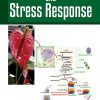Correlative Light and Electron Microscopy IV 1st Edition by Thomas Muller Reichert, Paul Verkade ISBN 9780128220580 0128220589
$50.00 Original price was: $50.00.$25.00Current price is: $25.00.
Correlative Light and Electron Microscopy IV 1st Edition by Thomas Muller Reichert, Paul Verkade – Ebook PDF Instant Download/Delivery: 9780128220580 ,0128220589
Full download Correlative Light and Electron Microscopy IV 1st Edition after payment

Product details:
ISBN 10: 0128220589
ISBN 13: 9780128220580
Author: Thomas Muller Reichert, Paul Verkade
Correlative Light and Electron Microscopy IV, Volume 162, a new volume in the Methods in Cell Biology series, continues the legacy of this premier serial with quality chapters authored by leaders in the field. Besides the detailed description of protocols for CLEM technologies including time-resolution, Super resolution LM and Volume EM, new chapters cover Workflow (dis)-advantages/spiderweb, Serial section LM + EM, Platinum clusters as CLEM probes, Correlative Light Electron Microscopy with a transition metal complex as a single probe, SEM-TEM-SIMS, HPF-CLEM, A new workflow for high-throughput screening of mitotic mammalian cells for electron microscopy using classic histological dyes, and more.
- Contains contributions from experts in the field
- Covers topics using nano-SIMS and EDX for CLEM
- Presents recent advances and currently applied correlative approaches
- Gives detailed protocols, allowing for the application of workflows in one’s own laboratory setting
- Covers CLEM approaches in the context of specific applications
- Aims to stimulate the use of new combinations of imaging modalities
Correlative Light and Electron Microscopy IV 1st Edition Table of contents:
Chapter 1: 50 Shades of CLEM: How to choose the right approach for you
Abstract
1: What is CLEM?
2: The microscopist’s dilemma
3: Sample preservation
4: Case studies
5: How to choose your shade of CLEM: Closing remarks
Acknowledgments
Chapter 2: The Histo-CLEM Workflow for tissues of model organisms
Abstract
1: Introduction
2: General design of the Histo-CLEM Workflow
3: Application example
4: Concluding remarks
Acknowledgments
Chapter 3: Fluorescent platinum nanoclusters as correlative light electron microscopy probes
Abstract
1: Introduction
2: CLEM probes
3: Instrumentation, materials, and reagents
4: Methods
5: Generation and validation of the probe
6: Use of PtNCs
7: Discussion and outlook
Acknowledgments
Chapter 4: Refining a correlative light electron microscopy workflow using luminescent metal complexes
Abstract
1: Introduction
2: Transition metal Ir complex 1
3: Instrumentation and materials
4: Methods
5: Results
6: Discussion
Acknowledgments
Chapter 5: Sample preparation for energy dispersive X-ray imaging of biological tissues
Abstract
1: Introduction
2: Routine chemical fixation of tissues
3: Resin
4: Contrasting
5: Grids and sample holder
6: Other considerations
7: Conclusion
8: Materials
Acknowledgments
Author contributions
Chapter 6: HPM live μ for a full CLEM workflow
Abstract
1: Introduction
2: High pressure freezing principles
3: Designing the HPM live μ
4: Integration of the HPM live μ in a CLEM workflow
5: A live imaging, cryo-fluorescence, in-resin fluorescence and EM workflow: Validation at each step
6: Perspectives
Acknowledgments
Author contributions
Chapter 7: High-throughput screening of mitotic mammalian cells for electron microscopy using classic histological dyes
Abstract
1: Introduction
2: Methods
3: Instrumentation and materials
4: Discussion
Acknowledgments
Chapter 8: On-section correlative light and electron microscopy of large cellular volumes using STEM tomography
Abstract
1: Introduction
2: Methods
3: Instrumentation and materials
4: Results
5: Discussion
6: Conclusion
Acknowledgments
Chapter 9: An accelerated procedure for approaching and imaging of optically branded region of interest in tissue
Abstract
1: Introduction
2: Rationale
3: Methods
4: Instrumentation and materials
5: Discussion and conclusion
Acknowledgments
Chapter 10: Cryo-fluorescence microscopy of high-pressure frozen C. elegans enables correlative FIB-SEM imaging of targeted embryonic stages in the intact worm
Abstract
1: Introduction
2: A note on selecting the right cryoprotectant
3: Rationale
4: Methods
5: Instrumentation and materials
6: Discussion
Acknowledgments
Chapter 11: Correlative super-resolution fluorescence and electron cryo-microscopy based on cryo-SOFI
Abstract
1: Introduction
2: Rationale
3: Materials
4: Methods
5: Discussion
Acknowledgments
Chapter 12: Cryo-correlative light and electron microscopy workflow for cryo-focused ion beam milled adherent cells
Abstract
1: Introduction
2: Rationale
3: Materials
4: Methods
5: Results and discussion
Acknowledgments
Chapter 13: Super-resolution correlative light-electron microscopy using a click-chemistry approach for studying intracellular trafficking
Abstract
1: Introduction
2: Methods
3: Instrumentation and materials
4: Discussion
Acknowledgments
Chapter 14: Step-by-step guide to post-acquisition correlation of confocal and FIB/SEM volumes using Amira software
Abstract
1: Introduction
2: Precursor techniques
3: Software and hardware
4: Step-by-step guide
5: Summary and discussion
Acknowledgments
Chapter 15: Visualization and co-registration of correlative microscopy data with the ImageJ plug-in Correlia
Abstract
1: Introduction
2: Models for image co-registration
3: Correlia
4: Two real-life examples
5: Summary and conclusions
Acknowledgments
Chapter 16: Multimodality imaging beyond CLEM: Showcases of combined in-vivo preclinical imaging and ex-vivo microscopy to detect murine mural vascular lesions
Abstract
1: Introduction
2: Rationale
3: Methods and results
4: Discussion
5: Conclusion and outlook
Acknowledgment
Chapter 17: Correlative multimodal imaging: Building a community
Abstract
1: Setting the scene
2: A brief history
3: Building the community
4: Conclusion
Acknowledgments
People also search for Correlative Light and Electron Microscopy IV 1st Edition:
correlative light and electron microscopy (clem)
correlative microscopy
correlative light-electron microscopy
correlative light and electron microscope resolution
correlative light-electron microscopy (clem)
Tags: Thomas Muller Reichert, Paul Verkade, Correlative Light, Electron Microscopy IV
You may also like…
Fiction - Literary Fiction
29 Single and Nigerian INCOMPLETE First Edition Naijasinglegirl
Romance - Erotic Romance
Black Light Disciplined Black Light Series Book 29 1st Edition Livia Grant
Romance - Contemporary Romance
Dirty Little Secret (Forbidden Fantasies #29) 1st Edition S.E. Law
Romance - Erotic Romance
Black Light Disciplined Black Light Series Book 29 1st Edition Livia Grant
Medicine - Anatomy and physiology
Fantasy - Urban Fantasy
Housekeeping & Leisure - Activity & Game Books
Journal 29 Revelation Interactive Book Game Dimitris Chassapakis











